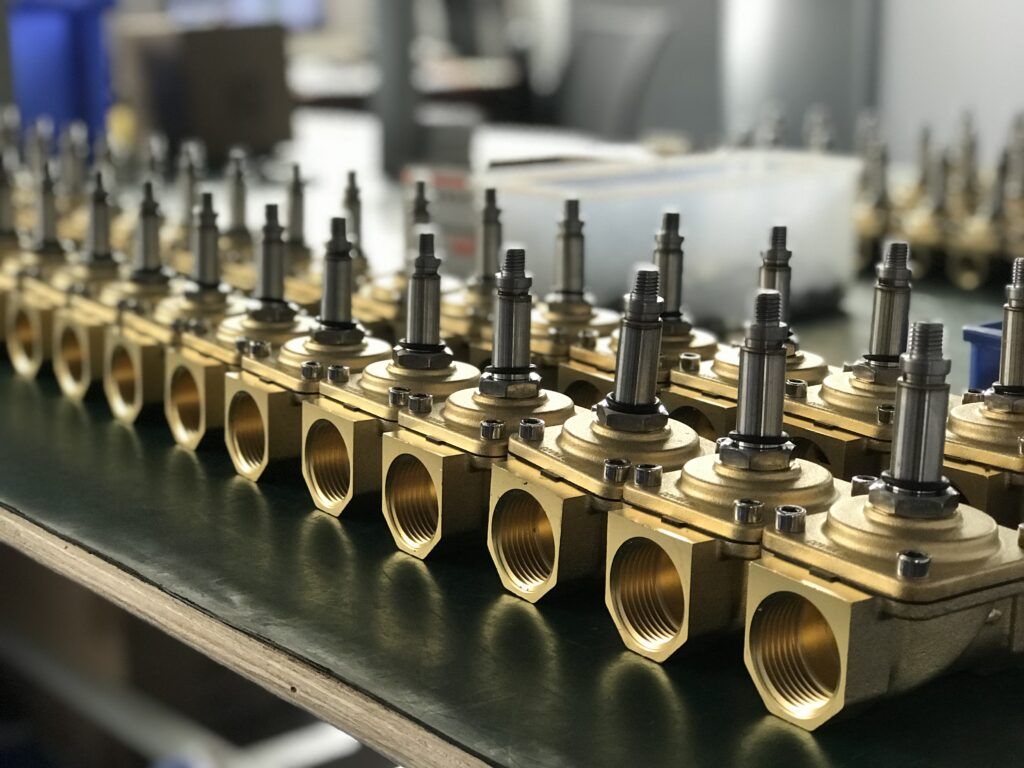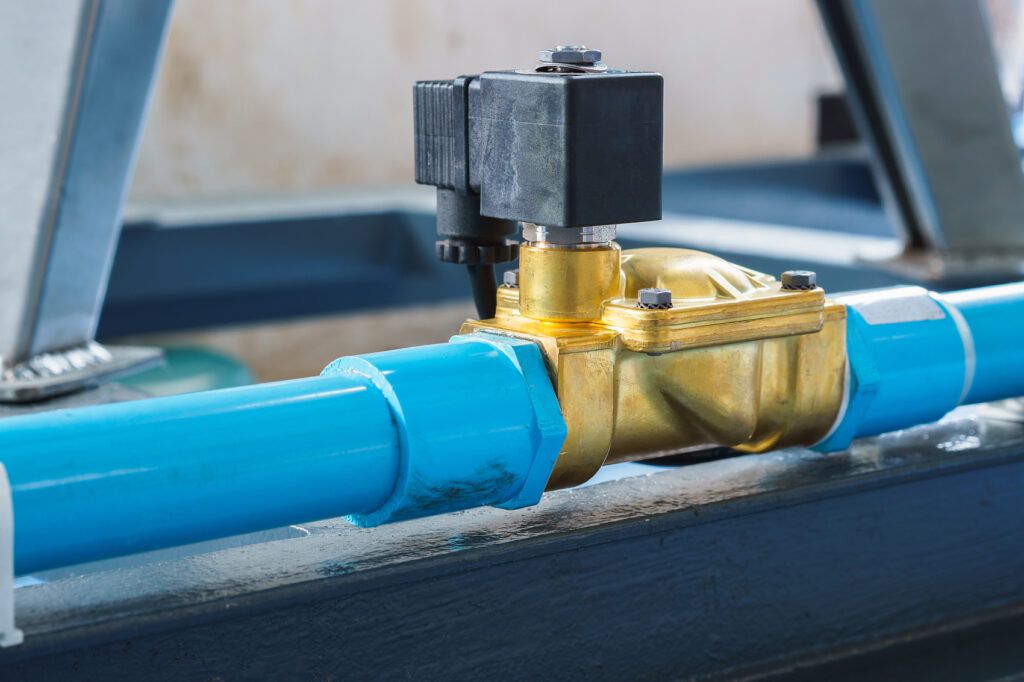技術理論:技術…實用…有趣的自動化工業解決方案

在 DELCO,我們了解客戶滿意度的重要性,並努力滿足每位客戶的獨特需求。作為可靠的閥門供應商,我們致力於提供優質的客戶服務和高品質的產品,以確保最佳的性能和使用壽命。透過選擇 DELCO 作為您值得信賴的控制空氣供應商,您可以受益於專門設計用於滿足您的要求的客製化閥門組件,從而提高效率並減少停機時間。
電磁閥通電後不工作是什麼原因?
電磁閥 在液壓和流體系統中發揮至關重要的作用,但有時通電後無法正常運作。這些故障可能由多種問題引起,了解常見原因有助於診斷和解決問題。下面,我們將探討電磁閥故障的一些最常見原因及其解決方案。
1. 流體壓力或壓差不一致
電磁閥故障的最常見原因之一是流體壓力不一致或壓力差不足。電磁閥設計在特定壓力範圍內工作,如果實際工作壓力偏離所需範圍,閥門可能無法正常工作。這會導致介質無法通過閥門,從而阻礙系統的性能。
解決方案:
確保流體壓力或壓力差在電磁閥規定的範圍內。如果有必要,請調整系統壓力或更換為更精確匹配工作條件的型號的閥門。
2. 流體黏度或溫度不相容
另一個常見問題是流體的黏度或溫度與電磁閥的設計規格不匹配。這種不匹配通常是由於閥門選擇不當或流體性質隨時間變化而發生的。例如,如果介質的黏度增加或溫度超過閥門的操作極限,則可能導致閥門故障。
解決方案:
檢查流體的性質並確保電磁閥與這些條件相容。如果可以調整流體的性質(例如,降低黏度或溫度),則這樣做。如果不是,請考慮用適合新流體特性的閥門來取代該閥門。
3.閥門部件中的污垢和雜質
污垢、碎片和其他雜質可能會導致電磁閥內出現嚴重問題。這些污染物常常積聚在閥芯和動鐵芯周圍,幹擾閥門的正常運作。當這些顆粒阻塞組件時,電磁閥可能無法正常開啟或關閉。
解決方案:
定期清潔電磁閥內部,清除任何積聚的污垢或碎屑。在電磁閥前安裝過濾閥有助於防止污染物進入系統並造成問題。定期維護是確保順利運作的關鍵。
4. 過濾器或先導閥孔堵塞
電磁閥前的過濾器或先導閥孔可能因流體中的雜質過多而被堵塞。過濾器或先導閥孔堵塞會導致閥門無法正常運作,從而導致故障或運作不穩定。
解決方案:
定期檢查過濾器和先導閥孔,並根據需要清潔。檢查進入閥門的介質是否有雜質,並確保有適當的過濾系統以防止堵塞。
5. 使用頻率過高或使用壽命已到
高工作頻率或超過閥門額定壽命的長期使用會嚴重影響電磁閥的性能。高頻連續運轉會磨損內部組件,而超過使用壽命的電磁閥可能不再有效回應通電訊號。
解決方案:
如果可能的話,降低工作頻率或用可以處理更高頻率的型號更換閥門。如果電磁閥已經超過了使用壽命,則應更換新的電磁閥以恢復正常運作。
6. 安裝、操作或維護不當
安裝不正確、操作不當或缺乏定期維護也會導致電磁閥故障。如果閥門未按照製造商的指導安裝,或在其建議參數之外操作,則閥門可能無法正常工作。
解決方案:
確保電磁閥安裝正確、在規定範圍內運作、並定期維護。遵循製造商的使用和維護建議,以延長閥門的使用壽命並防止故障。
結論
電磁閥 故障可能由多種因素引起,從不正確的流體壓力和溫度不匹配到隨著時間的推移而產生的污染和磨損。透過儘早解決這些問題並進行定期維護,操作員可以確保其電磁閥繼續可靠地運作。在對電磁閥問題進行故障排除時,請務必考慮操作條件、流體介質和使用頻率。如果問題仍然存在,可能需要用更合適或升級的型號更換閥門,以實現最佳系統性能。
定期檢查和正確處理電磁閥可以顯著降低故障的可能性並提高液壓和流體系統的整體效率。
如何快速獲得工業閥門的報價?
如果您對閥門有疑問或想獲得報價,請隨時聯絡我們,我們將在 6 小時內回覆。電話 +86 159 8960 2972、WhatsApp +86 159 8960 2972 或電子郵件行銷 [email protected]。
DELCO 的品質、有競爭力的價格和卓越的服務使其成為幫助您拓展業務的最佳閥門合作夥伴。定制您的閥門,我們沒有最低訂單量。
在 DELCO,我們了解客戶滿意度的重要性,並努力滿足每位客戶的獨特需求。作為可靠的控制閥供應商,我們致力於提供優質的客戶服務和高品質的產品,以確保最佳性能和使用壽命。選擇 DELCO 作為您值得信賴的控制閥供應商,您可以受益於專門設計用於滿足您的要求的客製化閥門組件,從而提高效率並減少停機時間。
此外,我們在電子壓力調節器方面的競爭性定價使您能夠提供一流的解決方案。作為領先的控制閥製造商之一,我們很自豪地提供可靠的閥門,這些閥門不僅符合行業標準,而且還能為您企業的整體盈利能力做出貢獻。透過與 DELCO 合作,您可以放心,因為您為公司的長期成功做出了明智的選擇。



